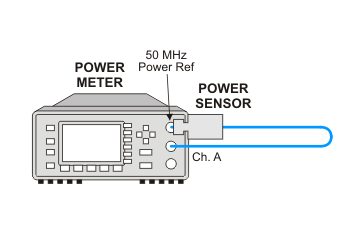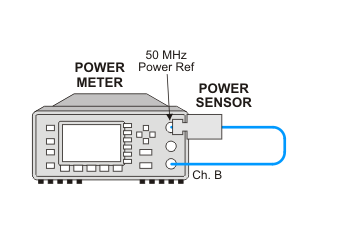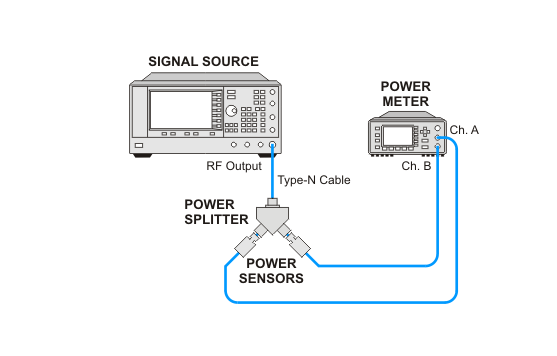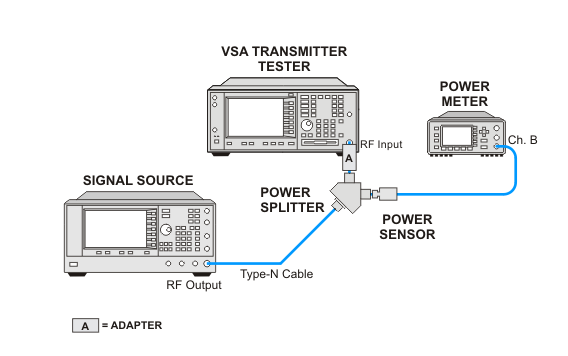
The Frequency Response adjustment measures amplitude error as a function of frequency. The measured errors are then stored as the frequency response correction factors. These correction factors are used to improve the amplitude accuracy over the frequency range of the instrument.
With the flatness correction function disabled, the test measures the amplitude of the input signal at various frequencies between 1 MHz and 4 GHz. The measured signal amplitude is compared to the absolute amplitude of the signal as measured by a calibrated power meter. The difference between the two measurements is the amplitude error and is normalized to be zero at 50 MHz.
The flatness correction function is enabled at the conclusion of the test.
The test has four parts: Power Splitter Characterization, 1 MHz to 50 MHz Uncorrected Flatness Measurement, 50 MHz to 4 GHz Uncorrected Flatness Measurement, and storage of the measured values into the instrument memory.
Power splitter characterization enhances the accuracy of the measurement by measuring the amplitude difference between the output arms of the power splitter. For more information on splitter characterization, refer to the test description for Frequency Response in the Absolute Amplitude test. The second and third parts of the test measure the amplitude of the source over the frequency range of the instrument and calculate the flatness correction factors.
Related performance test: Absolute Amplitude
|
Test Equipment |
Recommended Model Number |
|---|---|
|
RF Source 1 |
E8257D |
|
RF Source 2 |
|
|
Power meter |
N1914A |
|
Power sensor |
N8482A |
|
Power splitter |
11667A |
|
Cable, Type-N |
11500C |
|
Adapter, Type-N (m) to Type-N (m) |
1250-1475 |




